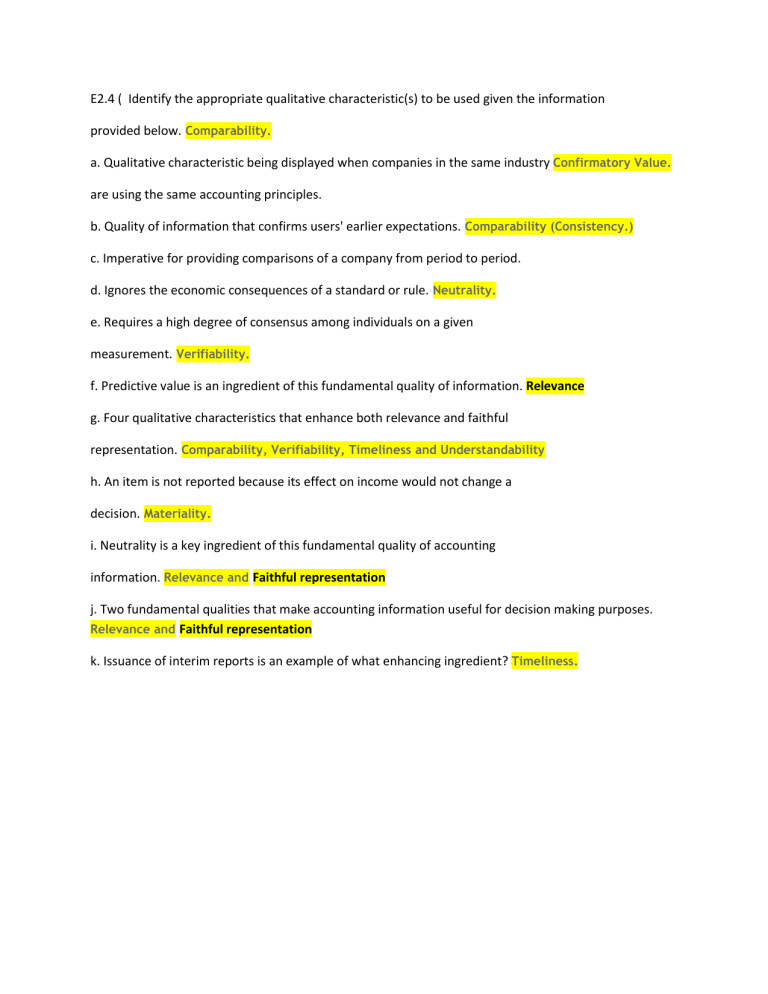
The use of the same accounting principles and methods over time within a single entity to ensure comparability of financial statements. The mix of quantitative and qualitative elements is clear in financial decision-making. Sites like asb.or.jp and ifrs.org show how complex accounting rules are explained clearly. Promoting good sustainability reporting (SR) practices makes companies more accountable.
Accounting Comparability
These standards are crucial for making sure financial reports are consistent worldwide. The U.S. enforces Generally Accepted Accounting Principles (GAAP) through FASB and the SEC. Meanwhile, the European Union adopted International Financial Reporting Standards (IFRS) in 2005.
3 Internal audit quality, capital appropriation by major shareholders and accounting comparability
Consistency refers to a company’s use of accounting principles over time. Accounting information is not absolute or concrete, and standards are developed to minimize the negative effects of inconsistent data. Without these rules, comparing financial statements among companies would be extremely difficult, even within what heading is the capital lease reported under on a balance sheet the same industry. It does not require all companies to adopt the same accounting policies because doing so would impair relevance. Comparability is achieved when companies present information such that knowledgeable users may adjust their financial statements so as to make them comparable to other periods/companies.

Formalized Reporting Processes and Educated Staff
Standards like IFRS and GAAP provide guidelines for preparing and presenting financial statements. By establishing criteria for recognizing, measuring, and disclosing financial information, these standards promote a uniform approach across organizations and jurisdictions. The comparability concept suggests that financial reports must be prepared under the same accounting principles and methods each year. If a transaction requires subjectivity, it must be dealt with in the same consistent manner every year.
Differing Accounting Methods Between Companies
IFRS adoption greatly improved comparability in EU-listed companies’ reports. Studies show that investors value earnings per share more with higher accounting comparability. This shows that the market appreciates standardized and clear financial reports. However, adapting to IFRS can be costly, especially for small businesses. Rapid advancements in technology and new business models present challenges to comparability. The proliferation of digital assets, like cryptocurrencies, and complex financial instruments require new accounting treatments that are still evolving.
- The mix of quantitative and qualitative elements is clear in financial decision-making.
- These rules make it easier to examine financial data by standardizing the terms and methods that accountants must use.
- These principles are largely set by the Financial Accounting Standards Board (FASB), an independent nonprofit organization whose members are chosen by the Financial Accounting Foundation.
- These include lower debt costs for companies and better analytical predictions.
- Additionally, annual effects (YEAR) and industry effects (IND) are controlled.
Conversely, in a fiercely competitive product market, the presence of benchmark competition prompts company shareholders to scrutinize and supervise management decisions more closely. Managers jeopardizing shareholder interests may risk dismissal, motivating them to preserve their career prospects by curbing actions detrimental to the company’s value [72, 73]. Consequently, heightened competition in the product market weakens enterprise agency problems, leading to increased financial information transparency.
Reclassifying the internal audit level based on the annual industry median, we define the variable IAQ1. Assigning a value of 1 to samples with IAQ1 greater than or equal to the median, and 0 otherwise. Substituting IAQ with IAQ1 in model (6), the regression results in Column (2) of Table 4 indicate that the IAQ1 coefficient remains significantly positive, and the benchmark regression results exhibit robustness. “IADuty” delineates the scope of responsibilities assigned to the internal audit department, serving as an indicator of executive management’s endorsement of the department. The value of “IADuty” is calculated by dividing the total number of special audits, financial audits, internal control evaluations, and consulting tasks undertaken by the internal audit department by three.
Therefore, according to the study of Wen et al. (2004) [66], we conducted an intermediary effect analysis to test whether agency cost is the channel through which internal audit affects comparability. The study conducted in this article confronts potential endogeneity issues arising from data bias and confounding factors. To mitigate these concerns, the Propensity Score Matching (PSM) method is employed. Initially, Internal Audit Quality (IAQ) is categorized into high and low groups based on the annual industry median, creating a corresponding dummy variable, IAQ1. A value of 1 is assigned to IAQ1 for observations above the median, and 0 otherwise. Logistic regression is then applied to IAQ1, incorporating all control variables to derive scores for each observation.
We introduced the cross-multiplication term CR4×IAQ into model (6) for regression analysis. The results in column (2) of Table 7 indicate a significantly negative coefficient for the cross-multiplication term, suggesting that industry competition weakens the positive relationship between internal audit and comparability. However, it can be found that there is still controversy over whether internal auditing can improve the quality of accounting information. Meanwhile, in the context of increasingly strengthened audit supervision, few studies have examined the impact and mechanism of internal audit on the quality of accounting information from the perspective of comparability. Previous studies have found that internal audit can suppress earnings management, reduce internal control deficiencies [35] and violations [36, 37], lower risk levels [38], and improve profitability [39, 40]. However, some studies also suggest that the promotion and other incentives for the head of the internal audit department are constrained by the company’s management.

WHY CHOOSE US
QUANTITY GUARANTEE
100% Vietnamese human hair
GLOBAL SHIPPING
Fastest and Safest Delivery Worldwide with Trusted couriers
RETURNS & EXCHANGES
Available returns and exchanges policies applied
QUALITY
Quality is king